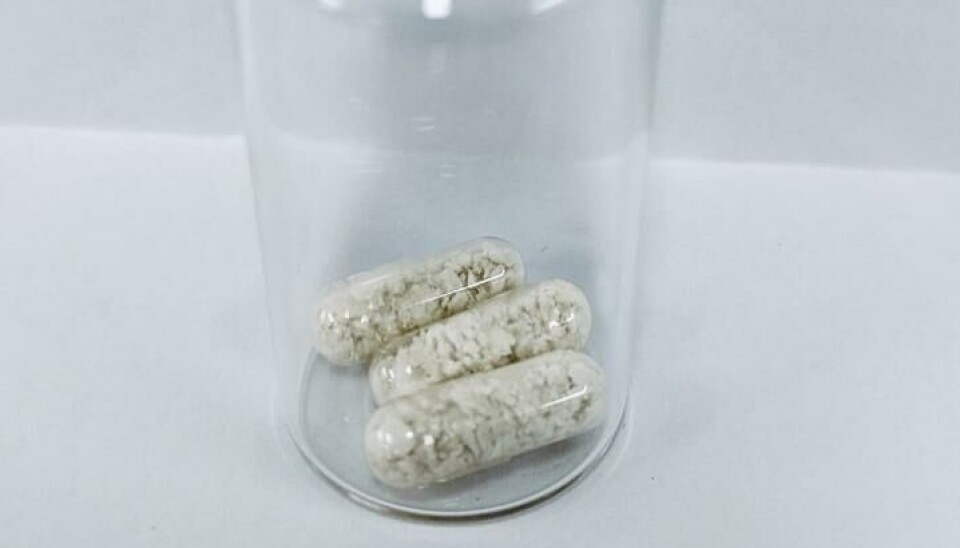THIS CONTENT IS BROUGHT TO YOU BY UiT The Arctic University of Norway - read more

Diabetes medicine without needles? Researchers are now testing edible insulin
The new insulin medicine has been tested on baboons, pigs, and mice with promising results. The medicine will be tested on humans in 2025.
There are approximately 425 million people worldwide with diabetes. Approximately 75 million of these inject themselves with insulin daily. Now they may soon have a new alternative to syringes or insulin pumps. Researchers have found a new way to supply the body with insulin.
The new insulin can be eaten by taking a capsule or even better, a piece of chocolate.
Inside these, we find tiny nano-carriers to which the insulin is attached. The particles are so small that they cannot even be seen under a regular microscope.

“This way of taking insulin is more precise because it delivers the insulin rapidly to the areas of the body that need it most. When you take insulin with a syringe, it is spread throughout the body where it can cause unwanted side effects,” Peter McCourt explains. He is a professor at UiT the Arctic University of Norway, and is one of the researchers behind the study.
Together with researchers from Australia, he has been involved in developing the new insulin method. The research was recently published in Nature Nanotechnology.
Delivered to the liver
It was researchers at the University of Sydney and Sydney Local Health District who, in collaboration with UiT, discovered many years ago that it was possible to deliver medicines via nano-carriers to the liver. The method has subsequently been further developed in Australia and in Europe.
Many medicines can be taken orally, but until now, it has been necessary to inject insulin into the body with a syrings.
McCourt explains that the problem with insulin is that it breaks down in the stomach and thus does not get to where it is needed in the body. This has been a major challenge in developing a diabetes medicine that can be taken orally.
But the researchers have now solved this challenge.
“We have created a coating to protect the insulin from being broken down by stomach acid and digestive enzymes on its way through the digestive system, keeping it safe until it reaches its destination, namely the liver,” McCourt say.
The coating is broken down by enzymes in the liver, releasing the insulin. These enzymes are only active when blood sugar is high.
“This means that when blood sugar is high, there is a rapid release of insulin, and even more importantly, when blood sugar is low, no insulin is released,” Nicholas J. Hunt at the University of Sydney says. Togeher with Victoria Cogger, he leads the project.
He explains that this is a more practical and patient-friendly method of managing diabetes. The reason is that it greatly reduces the risk of a low blood sugar event occurring, known as hypoglycemia. The insulin is released in a more controlled way depending on the patient's needs compared to injections where all the insulin is released in one shot.
Fewer side effects
The new method works similarly to how insulin works in healthy people. The pancreas produces insulin which first passes through the liver where a large portion of it is absorbed and maintains stable blood sugar levels.
In this new method, the nano-carrier releases insulin in the liver, where it can be absorbed or enter the blood to circulate in the body.
“When you inject insulin under the skin with a syringe, far more of it goes to the muscles and to adipose tissues that would normally happen if it was released from the pancreas, which can lead to the accumulation of fats. It can also lead to hypoglycemia, which can potentially be dangerous for people with diabetes."
With the new method, there will be fewer such side effects.
Additionally, you do not need to stab yourself with a needle, and you can take the medicine you need in a slightly more discreet way. This form of insulin does not need to be refrigerated.
Tested on baboons
The oral insulin has been tested on so-called nematodes, which are a kind of small worm. It has also been tested on mice and rats. And lastly, the medicine has now been tested on baboons in the National Baboon Colony in Australia.
“In order to make the oral insulin palatable, we incorporated it into sugar-free chocolate. This approach was well received,” Hunt says.
He says that 20 baboons have been involved in this study. When they received the medicine, their blood sugar levels lowered.
The baboons were normal, healthy baboons, but the oral insulin have also been tested on mice and rats that actually have diabetes. The mice and rats did not experience low blood sugar events (hypoglycemia) or gain weight. So her etoo, the new method worked in the same way as if they had received insulin via injection.
What remains now is to test the new method on humans.

Probably ready for use in two to three years
“Trials on humans will start in 2025. Clinical trials are performed in three phases; in the phase I trial, we will investigate the safety of the oral insulin and critically look at the incidence of hypoglycemia in healthy and type 1 diabetic patients. Our team is very excited to see if we can reproduce the absent hypoglycemia results seen in baboons in humans, as this would be a huge step forward. The experiments follow strict quality requirements and must be carried out in collaboration with physicians to ensure that they are safe for the test subjects,” says Hunt.
“After phase I, we will know that it is safe for humans, and will investigate how it can replace injections for diabetic patients in phase 2 trials,” he says.
The researchers hope that the new medicine will be ready for use by everyone in two to three years.
Reference:
Hunt et al. Oral nanotherapeutic formulation of insulin with reduced episodes of hypoglycaemia, Nature Nanotechnology, 2024. DOI: 10.1038/s41565-023-01565-2

This content is paid for and presented by UiT The Arctic University of Norway
This content is created by UiT's communication staff, who use this platform to communicate science and share results from research with the public. UiT The Arctic University of Norway is one of more than 80 owners of ScienceNorway.no. Read more here.
More content from UiT:
-
AI can help detect heart diseases more quickly
-
Why does Norway need its own AI law?
-
Researchers reveal a fascinating catch from the depths of the sea
-
How can we protect newborn babies from dangerous germs?
-
This is how AI can contribute to faster treatment of lung cancer
-
Newly identified bacterium named after the Northern Lights is resistant to antibiotics




































